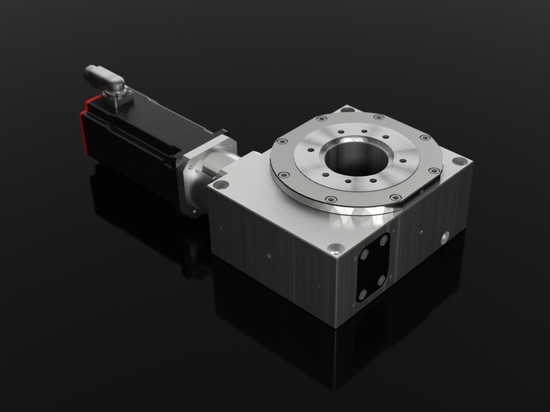
#Industry News
Transformation completed
Gigaset Communications GmbH relies on palletising system from IEF-Werner for collaborative application.
Furtwangen, 19.01.2023
Gigaset Communications GmbH, based in Bocholt, manufactures DECT phones for B2C and B2B, smartphones and smart home solutions. In 2020, the company has signed an exclusive agreement with Atos Unify: Gigaset will manufacture the next terminal family of desk phones in different variants for the world's leading provider of communication and collaboration solutions. For this purpose, the manufacturer in Bocholt has developed a new flexible and automated line concept in which cobots connect the handling stations with the assembly processes.
"Gigaset commissioned us with a solution that picks up components such as circuit boards delivered in trays, provides them in an oriented manner and feeds them to the assembly line in a predefined position," Wolfgang Kammerer, who is responsible for systems sales at IEF-Werner GmbH from Furtwangen, reports. "We have been working together successfully for many years and supplied numerous palletising systems in the past." But due to the use of collaborative robots, this order was different.
Flexible palletising system
IEF-Werner provided the varioSTACK with belt loader for this task. The open and modular palletising system can be adapted to different tray sizes - especially in quarter and octagonal dimensions. It is compactly built and can be easily integrated into any existing production structure - so it's perfect for Gigaset.
Until now, the varioSTACK processed pallets up to the standard size of 400 x 600 millimetres due to its size. However, Gigaset had established a tray system with dimensions of 775 x 575 millimetres for its new line, which can be filled with different inlays.
"We therefore had to build the system larger for this application without changing the basic concept," Kammerer explains. IEF-Werner has thus extended the varioSTACK upwards. The palletiser can now not only process trays in the specified special format, but also pallets with the standard dimension of 600 x 800 millimetres. Another challenge: The automation specialist had to design the varioSTACK for the collaborative production line.
An employee drives the trays loaded with blanks into the palletiser with a lift truck and places the complete stack on the belt. "To make this possible, we have positioned the belts closer together," Wolfgang Kammerer describes. This has a clear advantage for the staff, who can now work much more ergonomically. Because manually, this work step would be physically very strenuous due to the relatively large and unwieldy stacks.
The operator starts the automatic mode. The conveyor transports the trays into the infeed shaft. This is equipped with a lifting axis and a pallet gripper that picks up the top tray from the shaft, moves it upwards and places it on the table. Once in the processing position, a cobot mounted next to the varioSTACK removes the blanks one by one by reaching into the palletiser from above. The cobot is mounted on a fixed position and transfers the parts to a shuttle that transports the blanks to the next station.
When the tray is empty, the table conveys it to the discharge chute. This is also equipped with a lifting axis and pallet gripper. The system stacks the empty trays one after the other on the conveyor. When the stack is complete, it automatically moves to the end of the outfeed conveyor. Employees can remove it. The process starts again from the beginning.
Playing it safe
"We protect the lower danger area of the varioSTACK with a light curtain," Wolfgang Kammerer reports. "This ensures that no employee can reach into the system while it is running. Because the robot works without a protective enclosure, we also had to protect the upper part of the palletiser." When the trays are being fed in and out, a cover moves over the respective shaft and thus prevents the operator from reaching into this danger area. When the trays are changed, a second bulkhead closes the upper opening on the table cover in the direction of the cobot. This prevents the operator from reaching into the unloading zone of the palletiser. It is pneumatically driven and sensors monitor the two end positions.
For the control of the palletising system, IEF-Werner installed the Siemens S7 1500 with a self-developed user interface. An intuitive graphical user interface is available for operation. "Gigaset employees can use it to handle our varioSTACK effortlessly," says Kammerer. "We didn't position the control in a fixed position. The user can swivel it and place it in such a way that he or she can work in an ergonomically optimal way."








